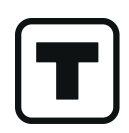An important new global initiative is launching today with the ambitious goal of creating transparency standards that help people easily assess the quality and reliability of journalism.
According to a news release from the nonpartisan Trust Project, leading media companies representing dozens of news sites will begin to display what they're calling Trust Indicators. The labeling is meant to provide clarity on the organizations’ ethics and other standards, the journalists’ backgrounds, and how they do their work. The indicators will also begin appearing on popular social platforms, such as Facebook, and in search engines.
The indicators were created with help from leaders at more than 75 news organizations worldwide. They will also show what type of information people are reading – news, opinion, analysis or advertising.
Each indicator is signaled in the article and site code, providing the first standardized technical language for platforms to learn more from news sites about the quality and expertise behind journalists’ work, says the release. Google, Facebook, Bing and Twitter have all agreed to use the indicators and are investigating and piloting ideas about how to best to use them to surface and display quality journalism. Here's some of the background work that has gone on to get to this point.

The Trust Project is led by Sally Lehrman of Santa Clara University’s Markkula Center for Applied Ethics, and hosted by the center.
“In today’s digitized and socially networked world, it’s harder than ever to tell what’s accurate reporting, advertising, or even misinformation,” Lehrman said. “An increasingly skeptical public wants to know the expertise, enterprise and ethics behind a news story. The Trust Indicators put tools into people’s hands, giving them the means to assess whether news comes from a credible source they can depend on.”
The German press agency dpa, The Economist, The Globe and Mail, the Independent Journal Review, Mic, Italy's La Repubblica and La Stampa, Trinity Mirror and The Washington Post are among the companies that will go live with Trust Indicators this month, said the release. The Institute for Nonprofit News developed a WordPress plug-in to facilitate broader implementation by qualified publishers.
It's no secret that there's an accelerated interest in finding ways to elevate the public's trust in the media. According to the release, only one third of Americans polled by Gallup say they have a great deal or fair amount of trust in news media. In the United Kingdom, only 43 percent of people in a 2017 Reuters Institute survey said they agreed that the news can be trusted, a significant drop from the prior year.

Each news organization displays the Trust Indicators within their own design environment on both article pages and site-wide pages. You can see an early example of what the Trust Indicators look like in this mockup.
Here's some background from the news release on how the Trust Project came to be:
Spurred by editors' concerns about the impact of technology on news quality, in 2014, Lehrman began building a network of news companies willing to take steps to instill greater trust in the journalism they produced. Senior news editors created the Trust Indicators based on in-depth user interviews, combining what users said they needed with journalism’s highest values.
"News consumers need a way to tell media companies what we expect from them, the types of news we can count on and will pay for. The Trust Indicators set standards for media outlets and allow newspeople to commit to good faith reporting that's worth buying,” said Craig Newmark, founder of craigslist, whose philanthropic fund was an early supporter of the Trust Project. The project is funded by the Craig Newmark Philanthropic Fund, Google, the John S. and James L. Knight Foundation, the Democracy Fund and the Markkula Foundation. [Disclosure: Poynter also gets finding from Newmark, Google and the Knight Foundation.]
The eight core indicators are:
Best practices: What are your standards? Who funds the news outlet? What is the outlet’s mission? Plus commitments to ethics, diverse voices, accuracy, making corrections and other standards.
Author expertise: Who reported this? Details about the journalist who wrote the story, including expertise and other stories they have worked on.
Type of work: What is this? Labels to distinguish opinion, analysis and advertiser (or sponsored) content from news reports.
Citations and references: For investigative or in-depth stories, greater access to the sources behind the facts and assertions.
Methods: Also for in-depth stories, information about why reporters chose to pursue a story and how they went about the process.
Locally sourced? Lets people know when the story has local origin or expertise.
Diverse voices: A newsroom’s efforts to bring in diverse perspectives.
Actionable feedback: A newsroom’s efforts to engage the public’s help in setting coverage priorities, contributing to the reporting process, ensuring accuracy and other areas.
The news release also addressed the social and search platforms who are working with the project:
At the same time that news sites are bolstering their transparency through the Trust Indicators, digital platforms aim to incorporate them into the way they display news stories. The Trust Indicators are integrated into the latest Schema.org technical vocabulary release with new language to capture news organization publishing principles and news content types, among other concepts. Additional vocabulary is to be proposed in our ongoing collaboration.
“Quality journalism has never been more important,” said Richard Gingras, vice president of news products at Google. “Partnering with the Trust Project since its conception has been of significant importance to Google, in large part because we believe the indicators can help our algorithms better understand authoritative journalism – and help us to better surface it to consumers. We hope to use the Type of Work indicator to improve the accuracy of article labels in Google News, and indicators such as Best Practices and Author Info in our Knowledge Panels. We believe this is a great first step for the Trust Project and look forward to future efforts as well.”
In early October, Facebook began to test a new feature to give people additional context on the articles they see in News Feed. Starting today, they will begin displaying the Trust Indicators through this module, initially rolling them out to a small group of publishers, with plans to expand more broadly over the coming months. “The Trust Indicators will provide a new level of accessibility and insight into the news that people on Facebook see day in and day out,” said Alex Hardiman, head of news products at Facebook. “We view this as a great next step in our ongoing efforts overall to enhance people's understanding of the sources and trustworthiness of news on our platform.”
A growing number of news outlets are expected to display the indicators over the next six months, with a second phase of news partners beginning implementation work soon.






